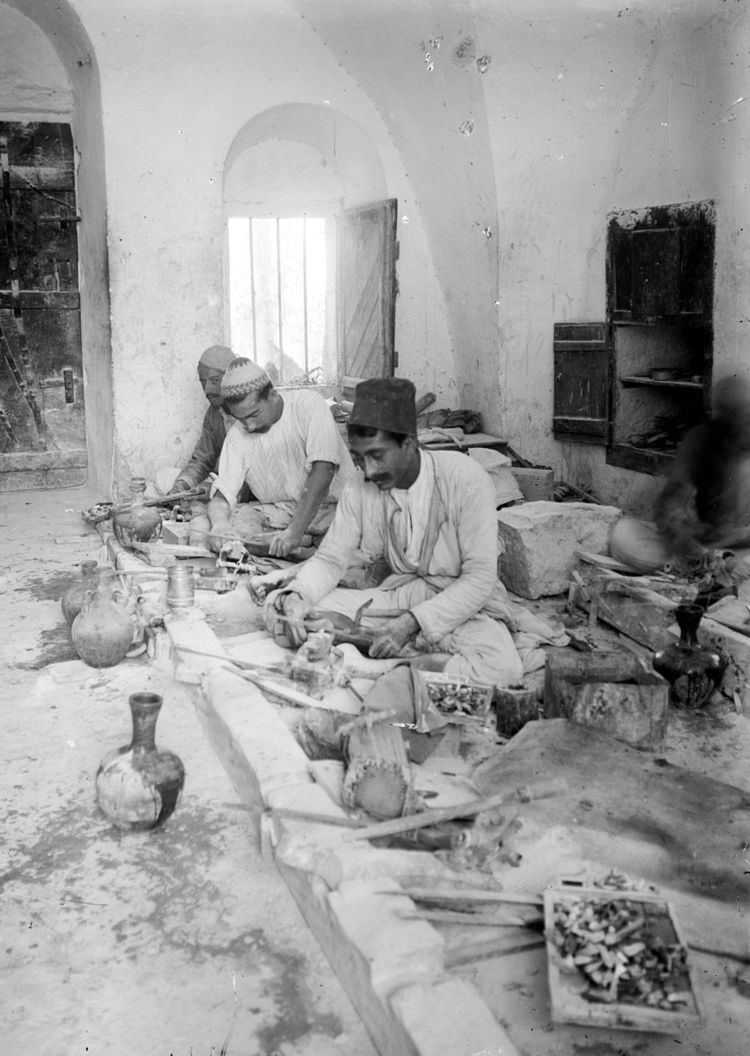 | ||
Mother-of-Pearl carving, a traditional handicraft in Bethlehem, is said to have been brought to the city by Franciscan friars from Italy in the 15th century.
Bethlehem's position as an important Christian city has for centuries attracted a constant stream of pilgrims. This generated much local work and income, also for women, including making mother-of-pearl souvenirs. According to Weir, Bethlehem women's employment in the mother-of-pearl industry goes back at least to the seventeenth century. It was noted by Richard Pococke, who travelled there in 1727.
Previously, most of the oysters for the mother-of-pearl supply came from the Red Sea. Today, however, Australia, California, New Zealand and Brazil are the main exporters.
The first exhibition in the west of mother-of-pearl artifacts from Palestine was at The World Fair in New York in 1852. Two brothers, Giries and Ibrahim Mansur, exhibited their work and were a great success.
Present day products, include crosses, earrings, brooches and picture frames.
